civilization vi leaders – Unique Unit: War-Cart
The constant conflicts between Sumerian city-states helped spread several war innovations throughout the ancient world, one of which being the War-Cart. This cart – a crude woven basket atop four sturdy wooden wheels – was pulled by donkeys and crewed by two warriors wielding battle axes and lances. Even though the War-Cart’s existence has gone undisputed, its purpose has not; some believe it was used in combat, while others believe it was simply used to ferry warriors to the place of battle.
Unique Improvement: Ziggurat
While Egypt was constructing its smooth, sloped pyramids, other ancient peoples such as the Sumerians were constructing a more terraced version of the same structure, called a ziggurat. First evidence of these rectangular stepped towers can be seen as early as 3000 BC. None of these ancient structures have survived to this day, though many are said to have been great in size – the greatest being the one in Babylon dedicated to the god Marduk, which may have inspired the parable of the Tower of Babel from the Book of Genesis.
Unique Unit: Mamluk
The Mamluk mounted knight caste rose from the ranks of slave soldiers to become a major element of Muslim armies. Mamluk wore full heavy armor on both their person and horse, and wielded lances, shields, and scimitar-shaped Mameluke swords.
Unique Building: Madrasa
Schools in Arabic are known as Madrasa, and can range anywhere from primary and secondary education, to higher education. Madrasas offer either secular or religious education in a variety of different Islamic based disciplines.
America – civilization vi leaders
Unique unit: P-51 Mustang
The P-51 “Mustang,” an aircraft created by America during World War II, was designed as a long-range, high-altitude fighter to serve in dogfights, escort bombers and even enact bombing missions on its own. The P-51 Mustang was able to outmaneuver the best German Luftwaffe fighters above 15,000 feet and even outlast the efficient Japanese fighters, and by 1943 the P-51 Mustang was in service on every American front.
Unique unit: Rough Rider
The 1st United States Volunteer Cavalry, better known by its colloquial moniker the “Rough Riders,” was a regiment recruited and raised by Theodore Roosevelt in 1898 AD to fight in the Spanish-American War. This volunteer regiment included 1,060 ranchers, cowboys, college athletes, miners and other rugged outdoorsmen hailing from New Mexico, Texas, Oklahoma and Arizona.
Unique Building: Film Studio
Thomas Edison, the much vaunted American inventor and businessman, created the first film studio in West Orange, New Jersey back in 1893. His film studio was used to capture the amusing larks of vaudeville and theater actors, to display within penny arcades, fairground tents and unused theaters. By 1920, there were a dozen film studios in operation around Hollywood, California, each feeding what would become an American and global obsession with film.
Queen Victoria
Unique District: Royal Navy Dockyard – A place to dock, repair, and tune up ships, worthy of The British Navy’s once unmatched naval force.
Unique Unit: Redcoat – Soldiers donning red and fighting for England on distant shores, their colors meant to conceal moral-ruining blood stains. As 2K kindly points out, this didn’t work. The blood stains appeared as terrifying black spots.
Unique Unit: Sea Dog – Private ships hired by Queen Elizabeth, Sea Dogs were given free reign to plunder foreign shores.
civilization vi leaders – Saladin
Unique Unit: Mamluk – Heavily armored, mounted knights who used lances, Mameluke swords, and shields to empower the Muslin armies.
Unique Building: Madrasa – The name for Arabic schools, these institutions range from primary to higher education.
Gilgamesh – civilization vi leaders
Unique Unit: War-Cart – Two soldiers armed with axes and lances sit in this basket on wheels, carted around by donkeys.
Unique Improvement: Ziggurat – Stepped pyramids, more rectangular than their Egyptian counterparts.
Trajan – civilization vi leaders
Unique Unit: Legion
Roman Legions were massive armies comprised of solider counts in the thousands. These armies utilized an infantry system called maniples – with 120 men in 12 files and 10 ranks, all part of a much larger organized structure. Armed with a pilum javelin, gladius sword, metal helmets, armor, and shields, soldiers shocked opponents by throwing their pilum and followed up with the gladius in close quarters.
Unique District: Bath
Bathing was a communal activity in Roman culture, and baths often served as a social and recreational hub. Roman baths were elaborate architectural works, and some even featured libraries, lecture halls, gyms, gardens, food and drink, and other recreational amenities.
civilization vi leaders – greece
Unique District: Acropolis
The Acropolis, which literally means “upper city” in Greek, is a fortified settlement built upon a hill or higher ground. The hilltop location provides strong defensive capabilities and, in many ancient cities, the Acropolis was the most central part of city. The Acropolis of Athens in Greece is the most iconic of these structures and has had several famous buildings erected on its premises, including the Parthenon.
Unique Unit: Hoplite
These citizen-soldiers of ancient Greek city-states were outfitted in bronze armor and carried a long spear and short, round shield. Hoplites received basic military training and primarily fought in the phalanx formation, a combat technique pioneered by Greece’s generals between 750 and 350 BC.
civilization vi leaders
Unique Unit: Berserker
Norse Berserkers were intimidating warriors who fought with ravenous ferocity as they plundered enemy lands and struck down enemies without hesitation. Berserkers were driven by uncontrollable rage as they allegedly performed superhuman feats in battle, despite being mostly clad in animal skins rather than armor.
Unique Unit: Viking Longship
Invented by Norsemen during the Viking Age, the Longship was used for commerce, trade, exploration and even war. Longships were categorized as speedy wooden vessels able to traverse waters only a meter in depth, and permitted Viking raiding parties to land on just about any beach. Its light weight allowed it to be easily carried over land, and the Longship’s symmetrical design meant its crew could reverse direction on water without conducting a full turn-around.
Unique Building: Stave Church
The large and elaborate wooden Stave Churches were large stone cathedrals named for their unique timber corner posts. The churches once numbered in the thousands throughout north-western Europe and have since been replicated globally, but originals now exist nearly exclusively in Norway.
Unique Unit: Ngao Mbeba
The Kongolese troops known as Shield-Bearers were highly trained heavy-infantry units, described by the Portuguese armies that faced them in 1577 as second to none. Armed with scimitar swords, long shields that extended from knees to neck, and little in the way of body armor, these units were the heart of Kongo’s powerful armies.
Unique District: Mbanza
The Mbanza were cities and towns in the Kongo that originated before European influence was established. These cities, located deep in the jungle, were much larger than their Medieval Era counterparts elsewhere. As these cities grew, crafting occupations proliferated the cities and became the ruling class. The capital of the Kongo was aptly named Mbanza Kongo.
Unique Unit: Varu
Originating in India, the Varu, otherwise known as the War Elephant, is one of the world’s most intimidating cavalry units. Atop the Varu rests a wooden box where archers and pikemen can attack infantry units relatively safe from harm, while the elephant itself presents multiple dangers to any soldiers within its path.
Unique Improvement: Stepwell
Indian Stepwells are man-made ponds in which water is aggregated at the center of a series of descending stairs. Marked by complex and elaborate designs that expanded beyond just utilitarian, stepwells made water readily available year-round for drinking, irrigation, bathing, and other uses.
civilization vi leaders – spain
Unique Unit: Conquistador
Conquistadors were Spanish warriors and explorers who traveled outside of European lands, colonizing territory and establishing new trade routes. These Spanish adventurers conquered the Inca, Maya, and Aztec civilizations during the Age of Discovery.
Unique Improvement: Mission
Spanish Missions were constructed in the New World as an attempt to convert indigenous peoples to Christianity. These religious outposts established the Spanish in the region and simultaneously expanded the reach of Christianity and the Spanish way of life.
civilization vi leaders – germany
Unique Unit: U-Boat
The formidable German military submarine known as the U-boat was in a class of its own when debuting in World War I, featuring a size, armament, and carrying capacity far superior to any rival nation. U-Boats continued to be a major tool of warfare in World War II, blockading enemy ports and intercepting merchant and civilian fleets before they could reach their destinations.
Unique District: Hansa
A confederation of medieval German merchants, the Hansa – marked by their famous Brick Gothic monuments – brought trading communities together to protect their economic interests. The center of the Hansa was Lubeck, where representatives met to discuss how to achieve the healthiest trading climate. The Hansa allowed the formation of armies that ensured defense against piracy and other dangers relevant to trading routes.
Unique Unit: Saka Horse Archer
The Saka Horse Archer was feared in the open field for its ability to harass soldiers grouped in columns and raid baggage trains, but wasn’t necessarily the most skilled unit in a stand-up fight. Saka Horse Archers are identified by their quilted trousers, open tunics and pointy caps.
Unique Improvement: Kurgan
Kurgans are essentially great mounds of dirt used to inter the dead. Some kurgans were truly impressive to behold, exceeding 500 meters (1,600 feet) in width at the base and standing as tall as 27 meters (89 feet). In the rolling open terrain of the steppes, kurgans stood out as a clear sign to all passersby of the importance of the man or woman within.
civilization vi leaders – egypt
Unique Unit: Maryannu Chariot Archer
The Maryannu Chariot Archer is a hereditary class of nobles riding in light chariots. This style of chariot offered a stable base for archers and more room for ammunition, but had its limitations when it came to terrain. Horses and chariots posed maintenance complications, especially during longer campaigns, but the Maryannu were ultimately one of the more elite units in the pharaoh’s army.
Unique Improvement: Sphinx
The Egyptian sphinx is a mythical creature comprised of a human’s head atop a lion’s body. The sphinx was a common theme for pharaohs obsessed with strength, eternity and wisdom, and ranged in size from small to great – the latter of which is seen in the oldest known monumental sculpture existing today: the “Great Sphinx” of Giza.
Unique Unit: Minas Geraes
This vessel was one of two unique battleships built for the Brazilian Navy in the early 20th century. Intended to secure Brazil as one of the international powers of the day, its creation sparked a naval arms race in South America and established Brazil as a strong naval power at that time.
Unique District: Street Carnival
The world-famous Carnival is an annual celebration featuring eccentric costumes and elaborate rhythmic parades across Brazil. Carnival varies between regions and goes on day-and-night in some parts of Brazil. It is easily the most famous holiday in the country and, in cities like Rio de Janeiro, can draw millions of participants, both locals and foreigners alike.
civilization vi leaders – france
Unique Unit: Garde Imperiale
A group of elite veteran soldiers formed by Napoleon Bonaparte in 1799, the Garde Imperiale often received better compensation, equipment, living quarters and rations during war, much to the dismay of the other soldiers in service. The Garde Imperiale were divided into three different groups – the Old, the Middle and the Young – and served Napoleon in all of his wars until their end at the Battle of Waterloo, where the Middle Guard retreated (for the first and only time) during the battle and left the Old and Young Guards to defend Napoleon’s withdrawal while simultaneously succumbing to the punishing cannons of the combined British and Prussian opposition.
Unique Improvement: Chateau
The term chateau has historically applied to large country homes with adjoining lands. In the 1600s, wealthy French lords marked the countryside with these elegant and luxurious mansions, though many were later burned during the myriad peasant and populist revolutions that swept through the nation. Numerous chateaus remain to this day as tourist attractions, including Catherine’s favorite, the Chateau de Chenonceau, site of many of her spectacular nighttime parties and the first fireworks display seen in France.
civilization vi leaders aztec
Unique Unit: Eagle Warrior
Within the Aztec army existed two classes of elite infantry: the Jaguar Warriors and the Eagle Warriors. Eagle Warriors were comprised of the bravest young men of noble birth who had managed to take the most prisoners in battle. Only after taking 20 prisoners intact enough to serve as human sacrifice could a young man be considered for Eagle Warrior status.
Unique Building: Tlachtli
When Aztecs weren’t waging war, capturing prisoners and sacrificing them to the gods, they often enjoyed a bit of sport. The Tlachtli, a ball court shaped like a capital I, was home to many games, including one particular game similar to basketball in which the goal is to place a ball through the opposition’s stone hoop; however, in the Aztec version, you can’t use your hands.
Wonder: Huey Teocalli
Otherwise known as the Greater Temple of the Aztecs, the Huey Teocalli is a giant terraced pyramid leading up to a temple where some of the most important Aztec rituals were performed. Unfortunately, there is very little left of the Huey Teocalli today, save for some scattered ruins in the Zocalo main square of Mexico City’s downtown district.
civilization vi leaders china
Unique Unit: Crouching Tiger Cannon
Gunpowder, discovered in China around 9th Century AD, was initially only used for fireworks and celebratory activities; however, its application eventually spread to warfare. And so the “Crouching Tiger” was born, a rough prototype of a cannon that was essentially an iron tube, wrapped in thick rope and sealed at one end. The Crouching Tiger was reported to be in use throughout China in 1368 and even as late as 1592.
Unique Improvement: Great Wall
In Civilization V, any player could construct the Great Wall Wonder; in Civilization VI, the Great Wall is a unique improvement exclusive to China. While the idea of a wall is certainly not unique, The Great Wall of China is the most impressive, inspiring awe for over 2000 years.
civilization vi leaders japan
Unique Unit: Samurai
Samurai, or known as Bushi class, existed for nearly a thousand years in Japan. Bushido (“the way of the warrior”) was a codified set of rules and way of life adopted by a large number of noble clans throughout Japan. The samurai class wasn’t officially abolished in Japan until 1868 and, to this day, remains one of the most identifiable Japanese cultural touchstones.
Unique Building: Electronics Factory
With the invention of consumer electronics in the late 20th Century, Japan quickly became home to the largest electronics industry in the entire world. The first modern electronics factory was built by Sony in 1946, and Japanese innovations since have kept the country most profitable in what is easily the most competitive consumer landscape mankind has ever seen.
civilization vi leaders – England
Unique District: Royal Navy Dockyard
The first shipbuilding dockyard, which dates back to 1496 AD, was located in Portsmouth, a town on the southern coast of England. At the height of its power, the British Empire owned the most advanced and intimidating naval force on Earth. The British Navy held a series of facilities around the world where commissioned ships could be docked, refitted, repaired and overhauled for battle.
Unique Unit: Redcoat
The famous (or infamous, depending on which side you stood) Redcoats, British infantrymen dressed in garish red ensembles, were Britain’s stalwart fighting force throughout the majority of its reign as a world superpower. Redcoats were shipped off to do battle for the Monarch in far off lands such as America, Zululand, India, Egypt and more. Even though the loud uniforms made these individuals easy targets for their foes, the rationale was that blood stains were disheartening to the men and so the red clothing would hide this. It did not, as blood does in fact show on red clothing as a black stain.
Unique Unit: Sea Dog
From 1560 to 1605 AD, Queen Elizabeth I gave permission to her “Sea Dogs,” a force of privateers – armored ships owned and officered by private individuals – to attack the ships and colonies of other nations, even if England was not officially at war with them. These “Sea Dogs” were little more than glorified pirates and many spent their lives raiding towns and other ships across the Caribbean.
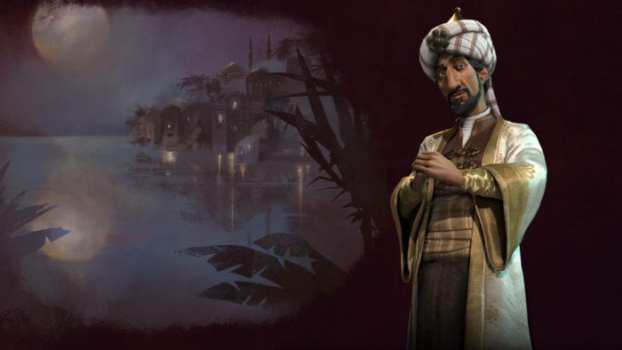
Saladin - Arabia
The Mamluk mounted knight caste rose from the ranks of slave soldiers to become a major element of Muslim armies. Mamluk wore full heavy armor on both their person and horse, and wielded lances, shields, and scimitar-shaped Mameluke swords.
Unique Building: Madrasa
Schools in Arabic are known as Madrasa, and can range anywhere from primary and secondary education, to higher education. Madrasas offer either secular or religious education in a variety of different Islamic based disciplines.
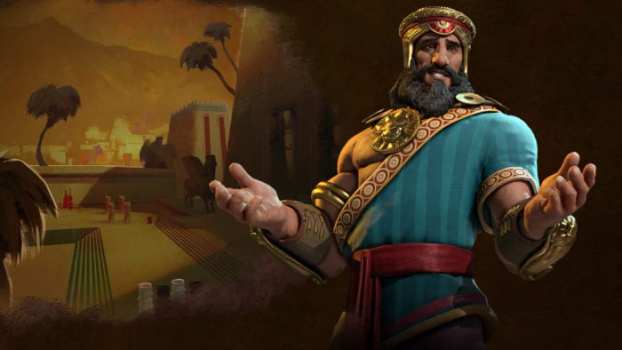
Gilgamesh - Sumeria
The constant conflicts between Sumerian city-states helped spread several war innovations throughout the ancient world, one of which being the War-Cart. This cart – a crude woven basket atop four sturdy wooden wheels - was pulled by donkeys and crewed by two warriors wielding battle axes and lances. Even though the War-Cart’s existence has gone undisputed, its purpose has not; some believe it was used in combat, while others believe it was simply used to ferry warriors to the place of battle.
Unique Improvement: Ziggurat
While Egypt was constructing its smooth, sloped pyramids, other ancient peoples such as the Sumerians were constructing a more terraced version of the same structure, called a ziggurat. First evidence of these rectangular stepped towers can be seen as early as 3000 BC. None of these ancient structures have survived to this day, though many are said to have been great in size – the greatest being the one in Babylon dedicated to the god Marduk, which may have inspired the parable of the Tower of Babel from the Book of Genesis.
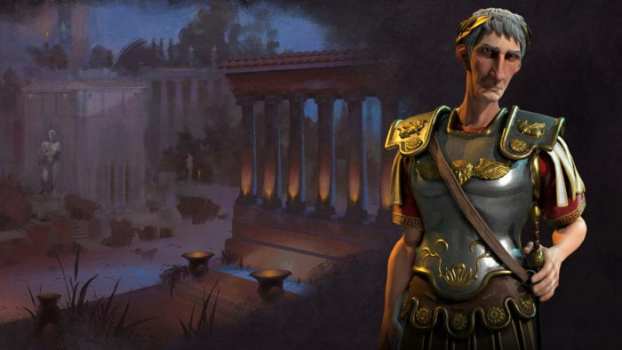
Trajan - Rome
Roman Legions were massive armies comprised of solider counts in the thousands. These armies utilized an infantry system called maniples – with 120 men in 12 files and 10 ranks, all part of a much larger organized structure. Armed with a pilum javelin, gladius sword, metal helmets, armor, and shields, soldiers shocked opponents by throwing their pilum and followed up with the gladius in close quarters.
Unique District: Bath
Bathing was a communal activity in Roman culture, and baths often served as a social and recreational hub. Roman baths were elaborate architectural works, and some even featured libraries, lecture halls, gyms, gardens, food and drink, and other recreational amenities.
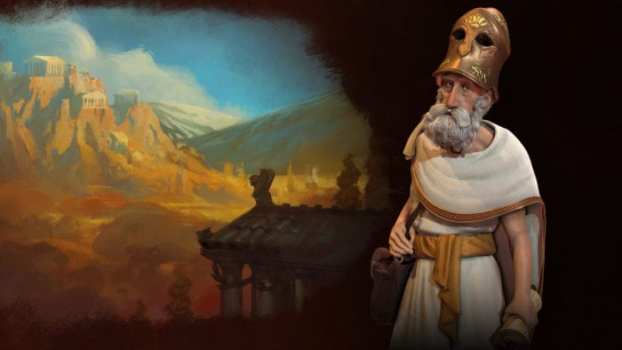
Pericles - Greece
The Acropolis, which literally means “upper city” in Greek, is a fortified settlement built upon a hill or higher ground. The hilltop location provides strong defensive capabilities and, in many ancient cities, the Acropolis was the most central part of city. The Acropolis of Athens in Greece is the most iconic of these structures and has had several famous buildings erected on its premises, including the Parthenon.
Unique Unit: Hoplite
These citizen-soldiers of ancient Greek city-states were outfitted in bronze armor and carried a long spear and short, round shield. Hoplites received basic military training and primarily fought in the phalanx formation, a combat technique pioneered by Greece’s generals between 750 and 350 BC.
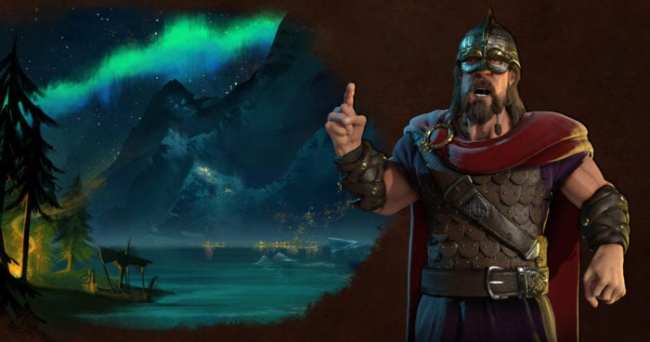
Harald Hardrada - Norway
Norse Berserkers were intimidating warriors who fought with ravenous ferocity as they plundered enemy lands and struck down enemies without hesitation. Berserkers were driven by uncontrollable rage as they allegedly performed superhuman feats in battle, despite being mostly clad in animal skins rather than armor.
Unique Unit: Viking Longship
Invented by Norsemen during the Viking Age, the Longship was used for commerce, trade, exploration and even war. Longships were categorized as speedy wooden vessels able to traverse waters only a meter in depth, and permitted Viking raiding parties to land on just about any beach. Its light weight allowed it to be easily carried over land, and the Longship’s symmetrical design meant its crew could reverse direction on water without conducting a full turn-around.
Unique Building: Stave Church
The large and elaborate wooden Stave Churches were large stone cathedrals named for their unique timber corner posts. The churches once numbered in the thousands throughout north-western Europe and have since been replicated globally, but originals now exist nearly exclusively in Norway.
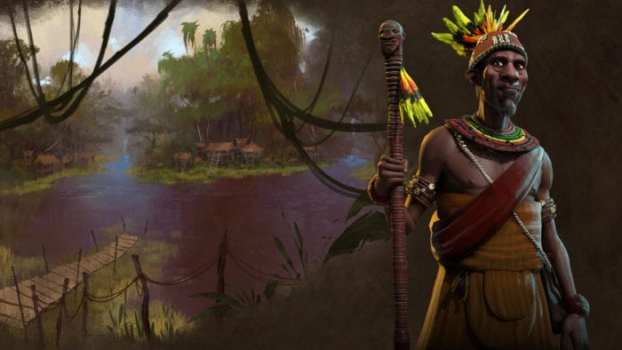
Mvemba a Nzinga - Kongo
The Kongolese troops known as Shield-Bearers were highly trained heavy-infantry units, described by the Portuguese armies that faced them in 1577 as second to none. Armed with scimitar swords, long shields that extended from knees to neck, and little in the way of body armor, these units were the heart of Kongo’s powerful armies.
Unique District: Mbanza
The Mbanza were cities and towns in the Kongo that originated before European influence was established. These cities, located deep in the jungle, were much larger than their Medieval Era counterparts elsewhere. As these cities grew, crafting occupations proliferated the cities and became the ruling class. The capital of the Kongo was aptly named Mbanza Kongo.
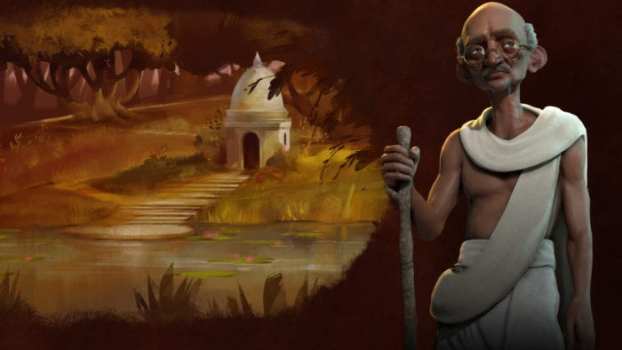
Mahatma Gandhi - India
Originating in India, the Varu, otherwise known as the War Elephant, is one of the world’s most intimidating cavalry units. Atop the Varu rests a wooden box where archers and pikemen can attack infantry units relatively safe from harm, while the elephant itself presents multiple dangers to any soldiers within its path.
Unique Improvement: Stepwell
Indian Stepwells are man-made ponds in which water is aggregated at the center of a series of descending stairs. Marked by complex and elaborate designs that expanded beyond just utilitarian, stepwells made water readily available year-round for drinking, irrigation, bathing, and other uses.
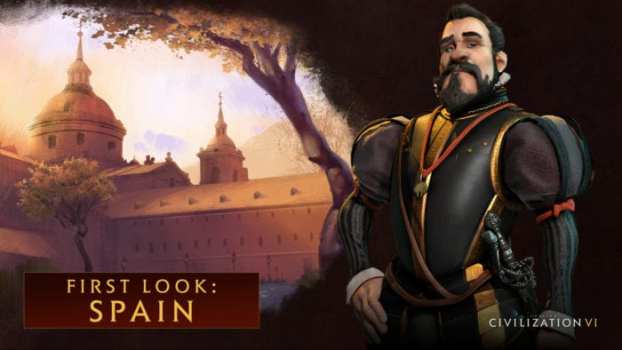
Philip II - Spain
Conquistadors were Spanish warriors and explorers who traveled outside of European lands, colonizing territory and establishing new trade routes. These Spanish adventurers conquered the Inca, Maya, and Aztec civilizations during the Age of Discovery.
Unique Improvement: Mission
Spanish Missions were constructed in the New World as an attempt to convert indigenous peoples to Christianity. These religious outposts established the Spanish in the region and simultaneously expanded the reach of Christianity and the Spanish way of life.
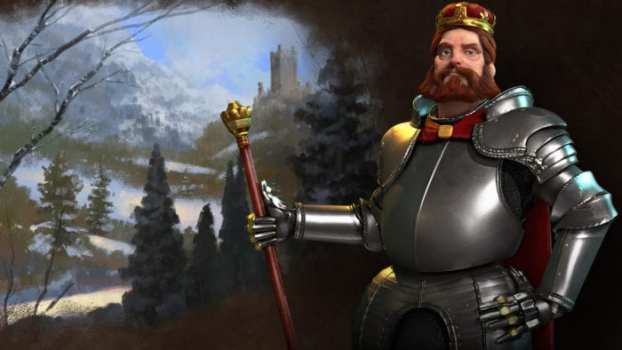
Frederick Barbarossa - Germany
The formidable German military submarine known as the U-boat was in a class of its own when debuting in World War I, featuring a size, armament, and carrying capacity far superior to any rival nation. U-Boats continued to be a major tool of warfare in World War II, blockading enemy ports and intercepting merchant and civilian fleets before they could reach their destinations.
Unique District: Hansa
A confederation of medieval German merchants, the Hansa - marked by their famous Brick Gothic monuments - brought trading communities together to protect their economic interests. The center of the Hansa was Lubeck, where representatives met to discuss how to achieve the healthiest trading climate. The Hansa allowed the formation of armies that ensured defense against piracy and other dangers relevant to trading routes.
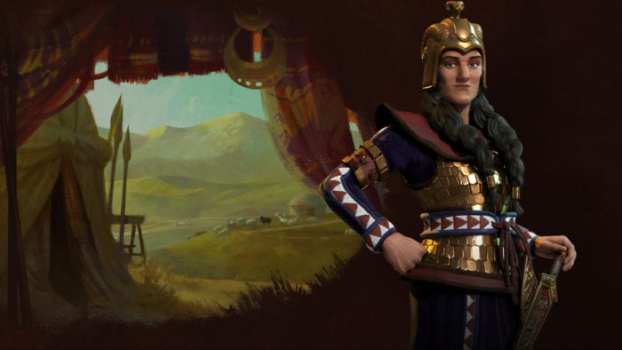
Tomyris - Scythia
The Saka Horse Archer was feared in the open field for its ability to harass soldiers grouped in columns and raid baggage trains, but wasn’t necessarily the most skilled unit in a stand-up fight. Saka Horse Archers are identified by their quilted trousers, open tunics and pointy caps.
Unique Improvement: Kurgan
Kurgans are essentially great mounds of dirt used to inter the dead. Some kurgans were truly impressive to behold, exceeding 500 meters (1,600 feet) in width at the base and standing as tall as 27 meters (89 feet). In the rolling open terrain of the steppes, kurgans stood out as a clear sign to all passersby of the importance of the man or woman within.
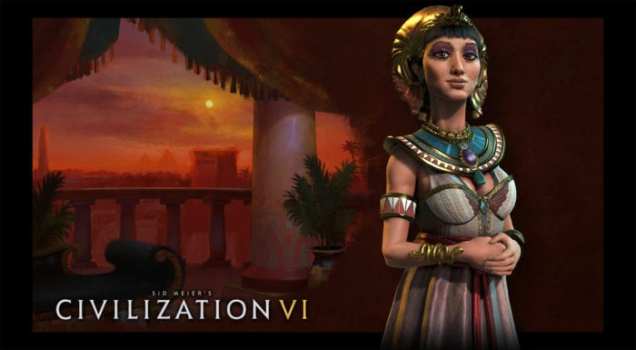
Cleopatra VII - Egypt
The Maryannu Chariot Archer is a hereditary class of nobles riding in light chariots. This style of chariot offered a stable base for archers and more room for ammunition, but had its limitations when it came to terrain. Horses and chariots posed maintenance complications, especially during longer campaigns, but the Maryannu were ultimately one of the more elite units in the pharaoh’s army.
Unique Improvement: Sphinx
The Egyptian sphinx is a mythical creature comprised of a human’s head atop a lion’s body. The sphinx was a common theme for pharaohs obsessed with strength, eternity and wisdom, and ranged in size from small to great – the latter of which is seen in the oldest known monumental sculpture existing today: the “Great Sphinx” of Giza.
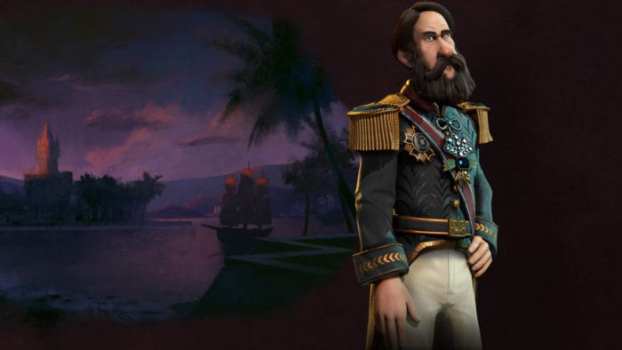
Pedro II - Brazil
This vessel was one of two unique battleships built for the Brazilian Navy in the early 20th century. Intended to secure Brazil as one of the international powers of the day, its creation sparked a naval arms race in South America and established Brazil as a strong naval power at that time.
Unique District: Street Carnival
The world-famous Carnival is an annual celebration featuring eccentric costumes and elaborate rhythmic parades across Brazil. Carnival varies between regions and goes on day-and-night in some parts of Brazil. It is easily the most famous holiday in the country and, in cities like Rio de Janeiro, can draw millions of participants, both locals and foreigners alike.
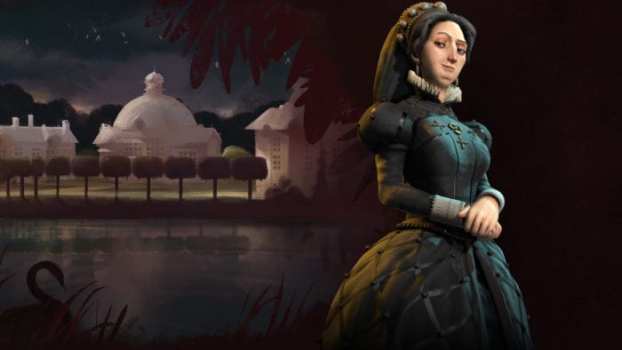
Catherine de’ Medici - France
A group of elite veteran soldiers formed by Napoleon Bonaparte in 1799, the Garde Imperiale often received better compensation, equipment, living quarters and rations during war, much to the dismay of the other soldiers in service. The Garde Imperiale were divided into three different groups - the Old, the Middle and the Young - and served Napoleon in all of his wars until their end at the Battle of Waterloo, where the Middle Guard retreated (for the first and only time) during the battle and left the Old and Young Guards to defend Napoleon’s withdrawal while simultaneously succumbing to the punishing cannons of the combined British and Prussian opposition.
Unique Improvement: Chateau
The term chateau has historically applied to large country homes with adjoining lands. In the 1600s, wealthy French lords marked the countryside with these elegant and luxurious mansions, though many were later burned during the myriad peasant and populist revolutions that swept through the nation. Numerous chateaus remain to this day as tourist attractions, including Catherine’s favorite, the Chateau de Chenonceau, site of many of her spectacular nighttime parties and the first fireworks display seen in France.
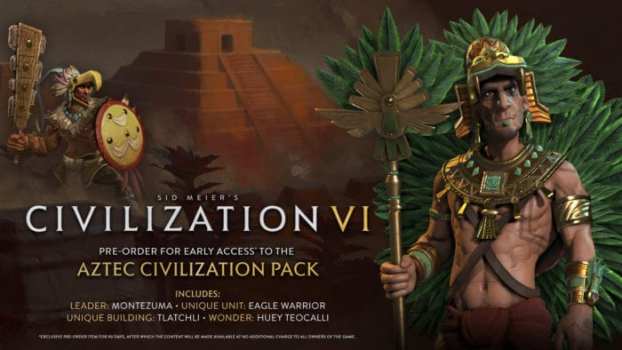
Montezuma I - Aztec
Within the Aztec army existed two classes of elite infantry: the Jaguar Warriors and the Eagle Warriors. Eagle Warriors were comprised of the bravest young men of noble birth who had managed to take the most prisoners in battle. Only after taking 20 prisoners intact enough to serve as human sacrifice could a young man be considered for Eagle Warrior status.
Unique Building: Tlachtli
When Aztecs weren’t waging war, capturing prisoners and sacrificing them to the gods, they often enjoyed a bit of sport. The Tlachtli, a ball court shaped like a capital I, was home to many games, including one particular game similar to basketball in which the goal is to place a ball through the opposition’s stone hoop; however, in the Aztec version, you can’t use your hands.
Wonder: Huey Teocalli
Otherwise known as the Greater Temple of the Aztecs, the Huey Teocalli is a giant terraced pyramid leading up to a temple where some of the most important Aztec rituals were performed. Unfortunately, there is very little left of the Huey Teocalli today, save for some scattered ruins in the Zocalo main square of Mexico City’s downtown district.
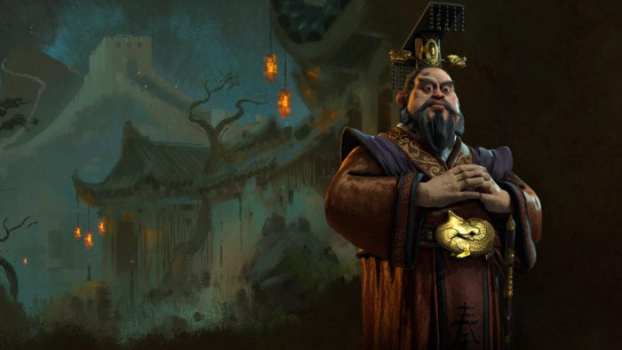
Qin Shi Huang - China
Gunpowder, discovered in China around 9th Century AD, was initially only used for fireworks and celebratory activities; however, its application eventually spread to warfare. And so the “Crouching Tiger” was born, a rough prototype of a cannon that was essentially an iron tube, wrapped in thick rope and sealed at one end. The Crouching Tiger was reported to be in use throughout China in 1368 and even as late as 1592.
Unique Improvement: Great Wall
In Civilization V, any player could construct the Great Wall Wonder; in Civilization VI, the Great Wall is a unique improvement exclusive to China. While the idea of a wall is certainly not unique, The Great Wall of China is the most impressive, inspiring awe for over 2000 years.
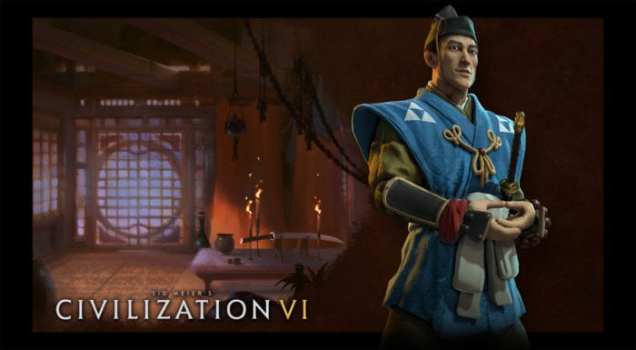
Hojo Tokimune - Japan
Samurai, or known as Bushi class, existed for nearly a thousand years in Japan. Bushido (“the way of the warrior”) was a codified set of rules and way of life adopted by a large number of noble clans throughout Japan. The samurai class wasn’t officially abolished in Japan until 1868 and, to this day, remains one of the most identifiable Japanese cultural touchstones.
Unique Building: Electronics Factory
With the invention of consumer electronics in the late 20th Century, Japan quickly became home to the largest electronics industry in the entire world. The first modern electronics factory was built by Sony in 1946, and Japanese innovations since have kept the country most profitable in what is easily the most competitive consumer landscape mankind has ever seen.
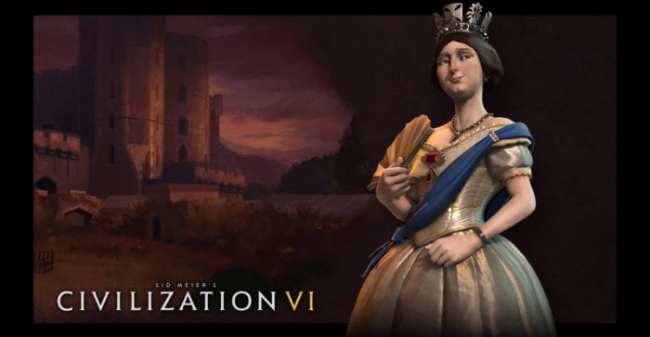
Queen Victoria - England
The first shipbuilding dockyard, which dates back to 1496 AD, was located in Portsmouth, a town on the southern coast of England. At the height of its power, the British Empire owned the most advanced and intimidating naval force on Earth. The British Navy held a series of facilities around the world where commissioned ships could be docked, refitted, repaired and overhauled for battle.
Unique Unit: Redcoat
The famous (or infamous, depending on which side you stood) Redcoats, British infantrymen dressed in garish red ensembles, were Britain’s stalwart fighting force throughout the majority of its reign as a world superpower. Redcoats were shipped off to do battle for the Monarch in far off lands such as America, Zululand, India, Egypt and more. Even though the loud uniforms made these individuals easy targets for their foes, the rationale was that blood stains were disheartening to the men and so the red clothing would hide this. It did not, as blood does in fact show on red clothing as a black stain.
Unique Unit: Sea Dog
From 1560 to 1605 AD, Queen Elizabeth I gave permission to her “Sea Dogs,” a force of privateers – armored ships owned and officered by private individuals – to attack the ships and colonies of other nations, even if England was not officially at war with them. These “Sea Dogs” were little more than glorified pirates and many spent their lives raiding towns and other ships across the Caribbean.
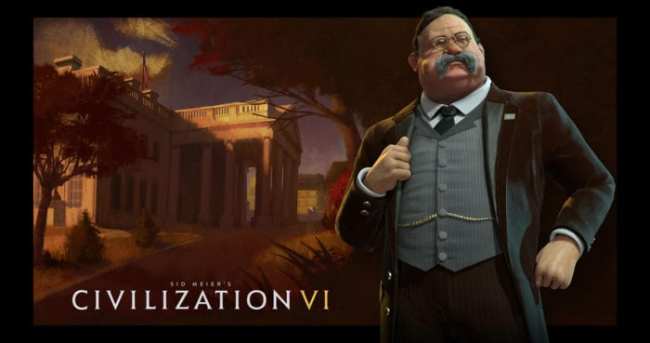
Theodore “Teddy” Roosevelt - America
The P-51 “Mustang,” an aircraft created by America during World War II, was designed as a long-range, high-altitude fighter to serve in dogfights, escort bombers and even enact bombing missions on its own. The P-51 Mustang was able to outmaneuver the best German Luftwaffe fighters above 15,000 feet and even outlast the efficient Japanese fighters, and by 1943 the P-51 Mustang was in service on every American front.
Unique unit: Rough Rider
The 1st United States Volunteer Cavalry, better known by its colloquial moniker the “Rough Riders,” was a regiment recruited and raised by Theodore Roosevelt in 1898 AD to fight in the Spanish-American War. This volunteer regiment included 1,060 ranchers, cowboys, college athletes, miners and other rugged outdoorsmen hailing from New Mexico, Texas, Oklahoma and Arizona.
Unique Building: Film Studio
Thomas Edison, the much vaunted American inventor and businessman, created the first film studio in West Orange, New Jersey back in 1893. His film studio was used to capture the amusing larks of vaudeville and theater actors, to display within penny arcades, fairground tents and unused theaters. By 1920, there were a dozen film studios in operation around Hollywood, California, each feeding what would become an American and global obsession with film.

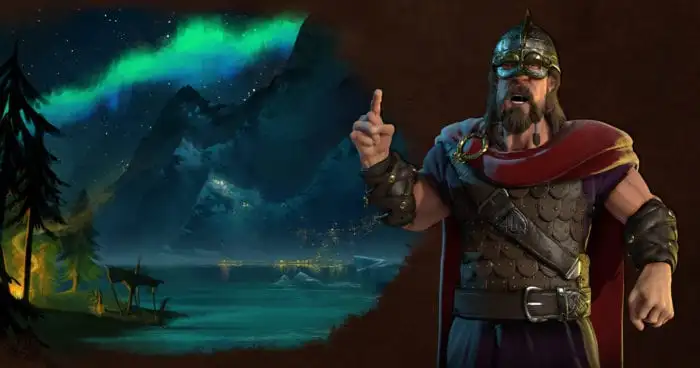

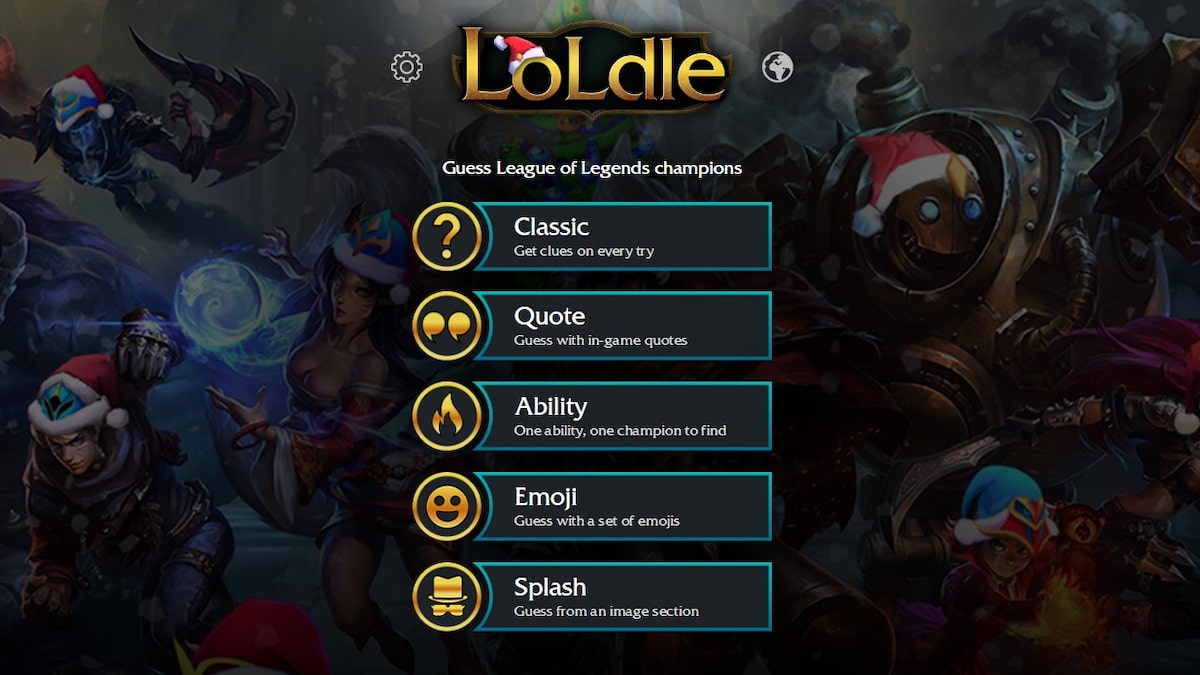


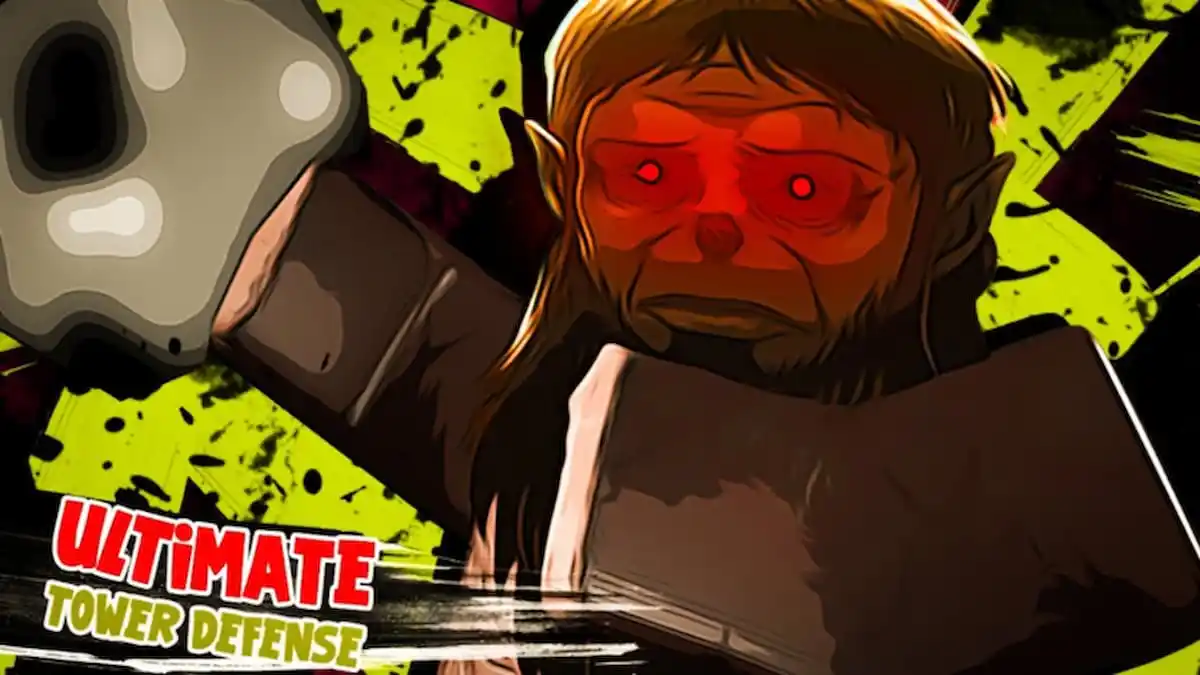

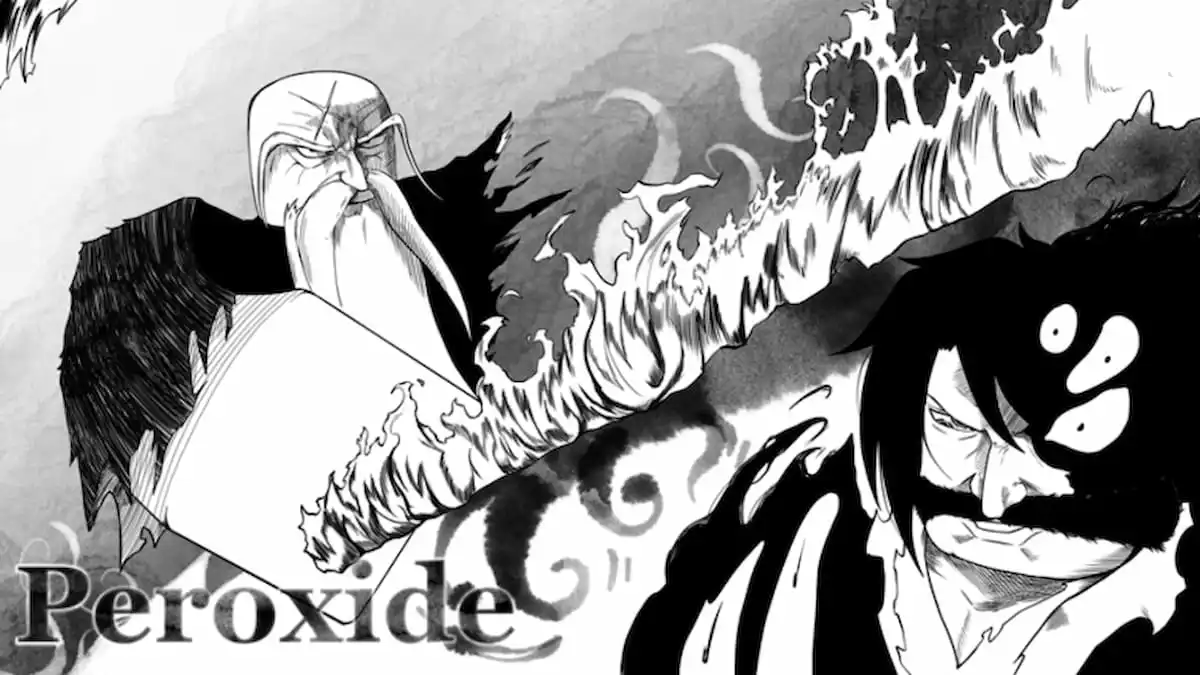
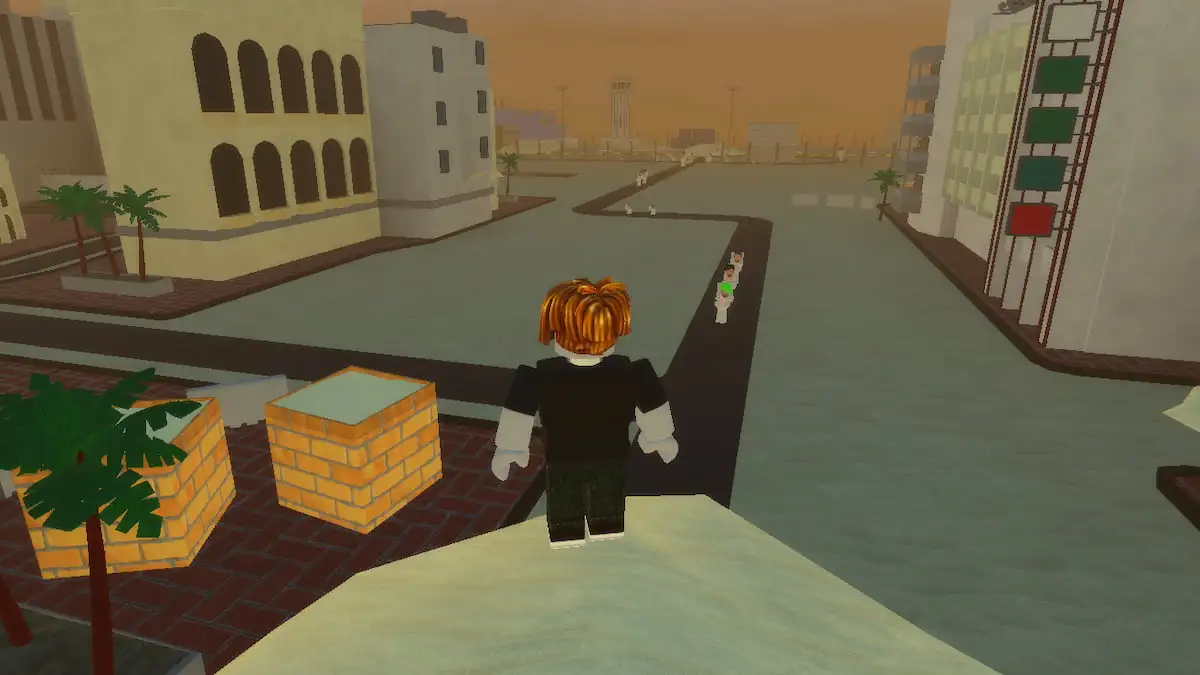
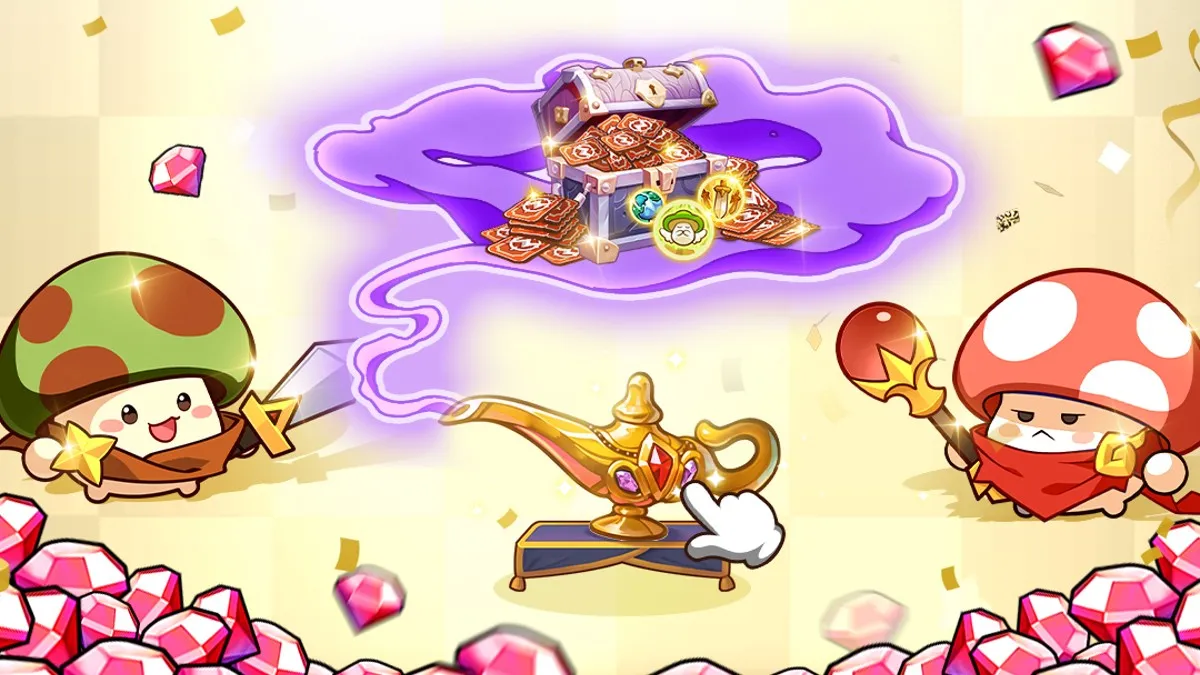


Updated: Oct 4, 2016 05:25 pm